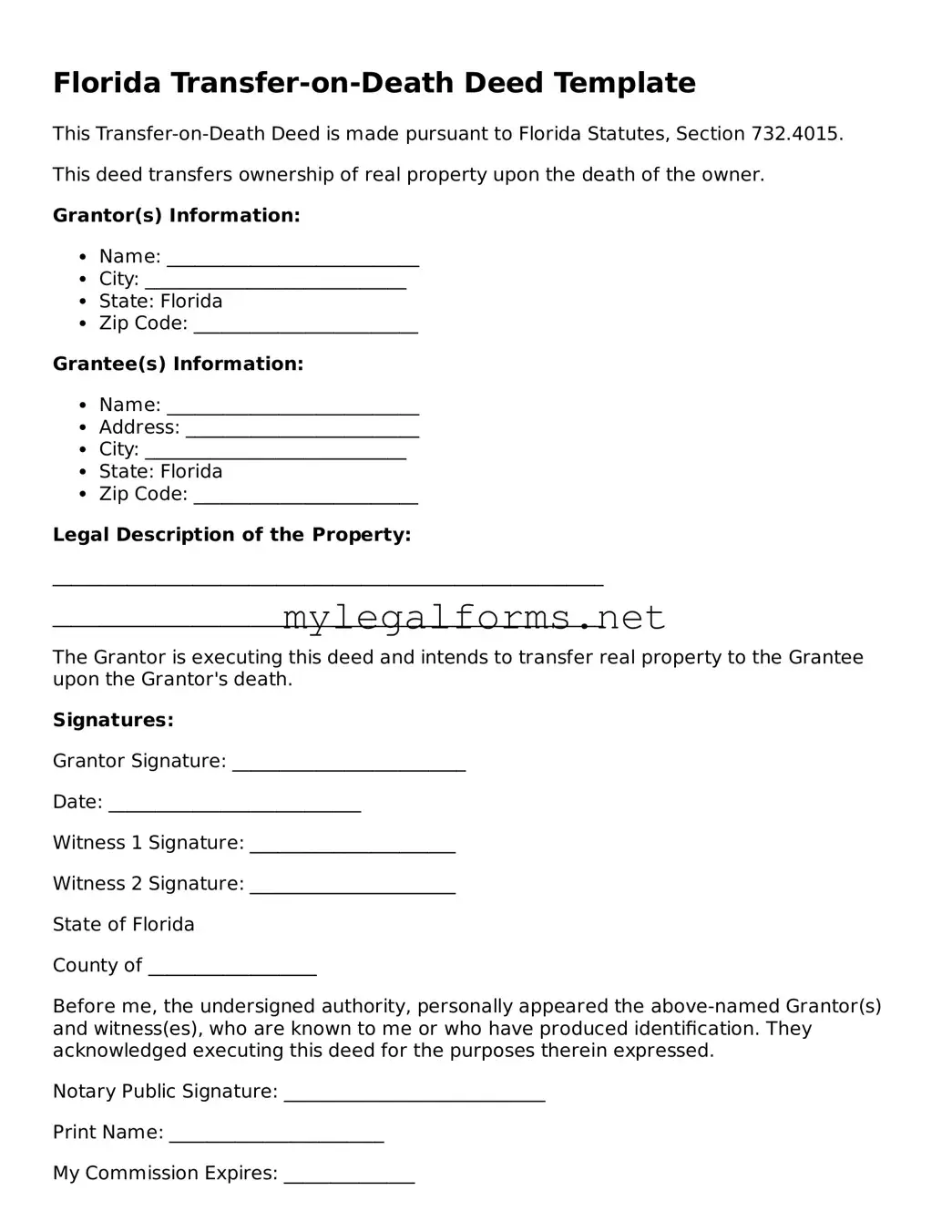Florida Transfer-on-Death Deed Template
This Transfer-on-Death Deed is made pursuant to Florida Statutes, Section 732.4015.
This deed transfers ownership of real property upon the death of the owner.
Grantor(s) Information:
- Name: ___________________________
- City: ____________________________
- State: Florida
- Zip Code: ________________________
Grantee(s) Information:
- Name: ___________________________
- Address: _________________________
- City: ____________________________
- State: Florida
- Zip Code: ________________________
Legal Description of the Property:
___________________________________________________________
___________________________________________________________
The Grantor is executing this deed and intends to transfer real property to the Grantee upon the Grantor's death.
Signatures:
Grantor Signature: _________________________
Date: ___________________________
Witness 1 Signature: ______________________
Witness 2 Signature: ______________________
State of Florida
County of __________________
Before me, the undersigned authority, personally appeared the above-named Grantor(s) and witness(es), who are known to me or who have produced identification. They acknowledged executing this deed for the purposes therein expressed.
Notary Public Signature: ____________________________
Print Name: _______________________
My Commission Expires: ______________
